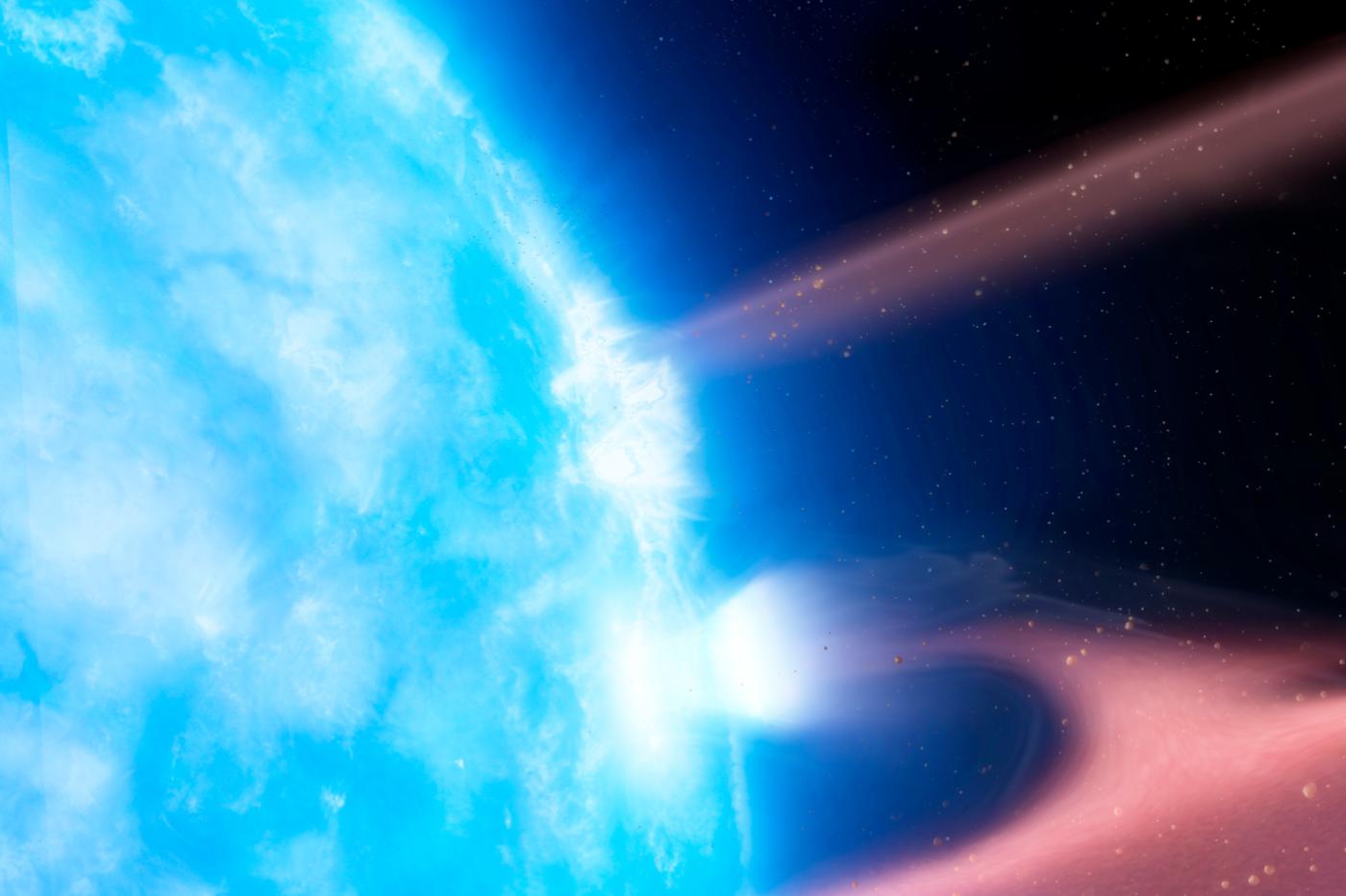
A taste of the fate that likely awaits the Earth when the Sun breathes its last billions of years from now.
Black holes are known to be real gluttons, but they’re not the only ones that can devour their neighborhood; for several years, more and more indications seem to indicate that certain stars – white dwarfs in particular – would also tend to engulf their congeners. And this is precisely what English astronomers observed indirectly for the very first time.
During its life, a star goes through different stages. So-called main sequence stars, like the sun, are the site of phenomenally powerful thermonuclear reactions. Once the fuel essential to these reactions has been exhausted, they can take two distinct paths depending on their mass: the most massive become so-called supergiant stars, while the majority of them become red giants. These last ones continue to swell and to cool gradually, until ejecting all the peripheral part of the star; it then leaves behind a white dwarf, which roughly corresponds to the core of the star.
This last phase, extremely violent, takes the form of a gigantic eruption of superheated gas which destroys everything in its path. Even the surrounding planets cannot escape it, and most of the time they are literally reduced to dust and other small fragments. This material then accumulates in a disk around the newly formed white dwarf.
In the atmosphere of some of these stars, several teams have already spotted traces of heavy elements such as iron. This suggests that these white dwarfs, referred to as “polluted”, tend to devour the remains of dead planets that orbit a bit too close. A necrophagous tendency already documented in the context of neutron stars, and which we should also be able to observe around white dwarfs according to current models. But that still remained to be demonstrated in this specific case, and that is what the English researchers managed to do.
A taste of the future of the Solar System
To try to confirm this hypothesis, the team from the University of Warwick has secured the services of the Chandra telescope. This instrument, which observes in the X-ray domain, allowed them to focus on G29-38, a polluted white dwarf located about 45 light years from Earth. They thus managed to detect X-ray emissions characteristic of activity on the surface of the star.
From the intensity of the radiation, they were able to estimate the temperature of the explosion that caused it, in this case one million degrees Celsius. However, this result fits perfectly with models that seek to simulate the impact of a dead planet with a white dwarf. They therefore concluded that G29-38 had just swallowed whole the remains of one of its former planets, or rather what remains of it after the deflagration of the star.
This is a significant observation for astronomers, because this particularity of white dwarfs could play a decisive role in their life cycle. However, more than 95% of the stars in the Milky Way will end their lives in this state. Understanding the mechanisms of white dwarfs is therefore fundamental to our understanding of the global dynamics of the universe… and offers us a chilling foretaste of the fate that likely awaits our Earth within a few billion years.
The text of the study is available here.



